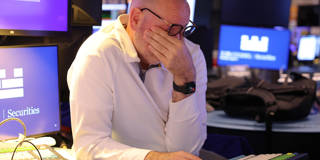OnPoint Subscriber Exclusive
The Big Picture brings together a range of PS commentaries to give readers a comprehensive understanding of topics in the news – and the deeper issues driving the news. The Big Question features concise contributor analysis and predictions on timely topics.

What Soft Landing?
While stock markets have recovered somewhat from last Monday’s rout, investors remain rattled, fearing further volatility. What was behind the sudden selloff, and does it portend a period of escalating global economic distress – and even a US recession?